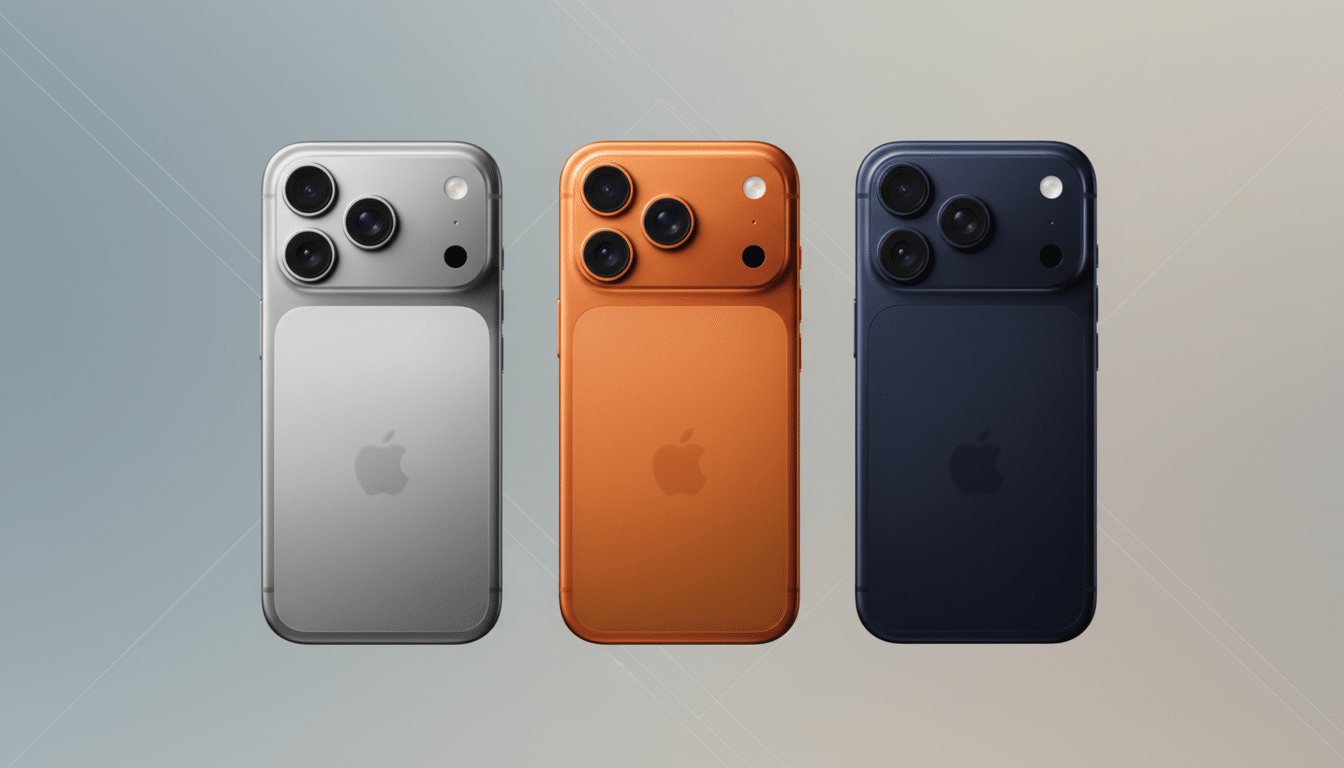A new industry report claims Apple will be cramming more RAM into most iPhone 17 models with the iPhone 17 Pro, iPhone 17 Pro Max and the all-new iPhone 17 Air apparently all jumping to 12GB of RAM, while the regular iPhone 17 should stay at 8GB. The forecast, based on current market factors and analyst estimates, is in line with earlier supply-chain talk.
Pro and Air Models May Get 12GB
Three out of four iPhone 17 models will make the 12GB ram move, says TrendForce A big boost for Apple’s higher-end handsets and new Air version. This would be unprecedented for the mainstream iPhone line which has traditionally scaled RAM increments far more conservatively than Android rivals.

The projection lines up with previous commentary from well-followed Apple analyst Ming-Chi Kuo, who previously said the iPhone 17 Pro, Pro Max, and Air were being eyed for 12GB targets. Although Apple never talks about RAM out in the open, both the supply chain and the developer community commonly confirm final RAM resolution right after devices are reviewed and washed up on teardown tables.
Base iPhone 17 Sticks at 8GB
TrendForce anticipates Apple’s regular iPhone 17 model will be shipped with 8GB of RAM, a figure that compares to the memory capacity of the iPhone 16 lineup in general former. Keeping the base model around 8GB would maintain Apple’s product segmentation, letting the Pro and the Air make room for heavier workloads without imposing a cost increase on the low end.
For day-to-day use, 8GB has been good enough for Apple to get away with given their iron-clad control over iOS’s in-memory management, app lifecycle policies, and aggressive background optimization. Benefits of the 12GB can be felt more intense when under heavy multitasking loads, pro-grade imaging work-flows and with advanced on device AI requests.
Why the Bump in Memory Matters
RAM is what modern iPhones use to do a lot more than switch between apps. The high-resolution camera capture, multi-frame image fusion, spatial video processing, and realtime voice processing are all data staged in memory. Now with 12GB, Pros and Airs should be able to keep more running processes open instead of purging backgrounder tasks, leading to less app reloads and better performance tied to more complex workflows.
More memory will also benefit Apple’s growing Apple Intelligence feature set. On-device language/image models require large amounts of RAM for context windows and intermediate tensors. Increased headroom can lead to shorter inference latencies, even make larger prompts in-memory resident, and reduce fallback to cloud services. Even Apple’s Image Playground, designed to produce images from text instructions, runs more fluidly when it can store the assets and model states in memory.

Developers gain upside as well. The increased RAM offers greater support for heavier web renderers, game engines, and creative applications for maintaining higher resolution textures or more substantial data sets. Pro video capture—ProRes, Log, and things like that—is offering longer takes with fewer background compromises, especially combined with fast NVMe storage and the next A‑series SoC.
Context: iPhone 16 and Android Rivals
To 12GB in most iPhone 17 versions would represent a generational leap beyond the amply 8GB iPhone 16 family. Apple has traditionally used effective software and memory compression to outperform or punch above the theoretical-including weight of devices with higher nominal RAM. That said, as workloads grow — especially around on-device AI — the capacity ceiling is relevant.
On the competitive front, numerous flagship Android phones already come with 12GB — and many high-end configurations go as high as 16GB. Devices such as Samsung’s Galaxy S24 Ultra and Google’s Pixel 8 Pro show how additional memory can help stabilize heavy multitasking and AI imaging functionalities. Getting most of the iPhone 17 line to 12GB closes the spec gap without compromising Apple’s efficiency advantage.
Memory Technology and Supply Chain Comments
Although it’s a capacity-focused report and not one on the type of memory, there are signs Apple will stick with high-speed LPDDR5X, or its equivalent, obtained from sources such as SK hynix, Samsung, or Micron. The resulting 12GB typically requires greater die-stacking in single-package configuration to keep the board real estate for cameras, radios, and larger battery.
Component costs are not going to inflate – memory is typically a single digit percentage of the bill of materials, and going from 8GB to 12GB isn’t going to make that much a difference. Past teardown cost analyses by firms including Counterpoint Research and TechInsights indicate Apple can afford such increases, absorbing or passing them on to consumers thanks to its price premiums.
What to Look For Confirmation
The last word on RAM usually comes with device tear downs, developer tool chains that open up memory info, and early benchmark metadata. Assuming these numbers hold, they would make the iPhone 17 Pro, Pro Max and Air the range’s most RAM-heavy to date, representing a platform that’s been tuned to handle heavier AI, imaging and pro workflows – while the standard model maintains a solid, if less headline-friendly 8GB base.

